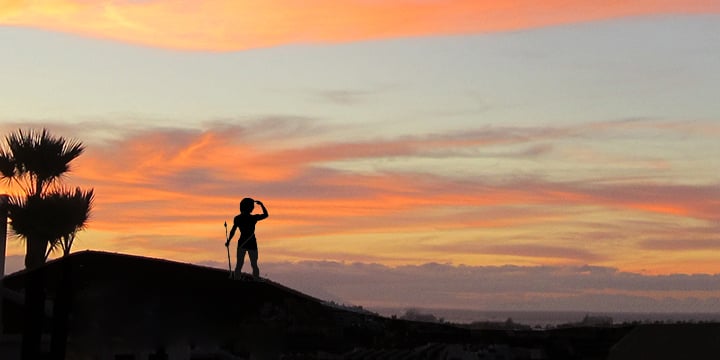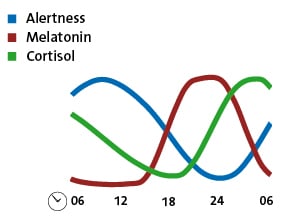
Light for humans
The fact that blue light activate and warm light calms, in increasing substantiated, it is all about imitating the natural light and its variation that has controlled our biological clock since the origin of life. With dynamic light we can see that the biological clock keeps time, especially during the dark months, or in rooms with limited access to natural light.
Up until now, our understanding has outstripped the technically capabilities, with various research projects being conducted within this field.
Light over the day
Especially during the dark months we can stimulate the circadian rhythm with light, using lower levels of warm light in the morning increasing to higher levels with cooler light until noon and then slowly return to lower levels and warm light in the afternoon.

The biological clock, also called the circadian rhythm (from the Latin circa dies, "about a day") and plays an important role in regulating wakefulness and sleep. If we can help that clock, we can help people feel better. By designing good lighting systems, lighting can help increase concentration and motivation and to improve subjective and objective well-being.
The ideal is simply to imitate natural light, both in level and colour during the day. Cold, intense light with a high blue is activating, warm dimmed light is relaxing.

Activating light showers
To activate and promote concentration, we can "shower" in high levels of cold light for short periods throughout the day. Studies in school environments have shown positive changes in activity. Perhaps this could be applied as activating light boost after lunch when the body's systems are fully occupied to digest food!
You can read more about this at lightingforpeople.eu or humancentriclighting.com.
